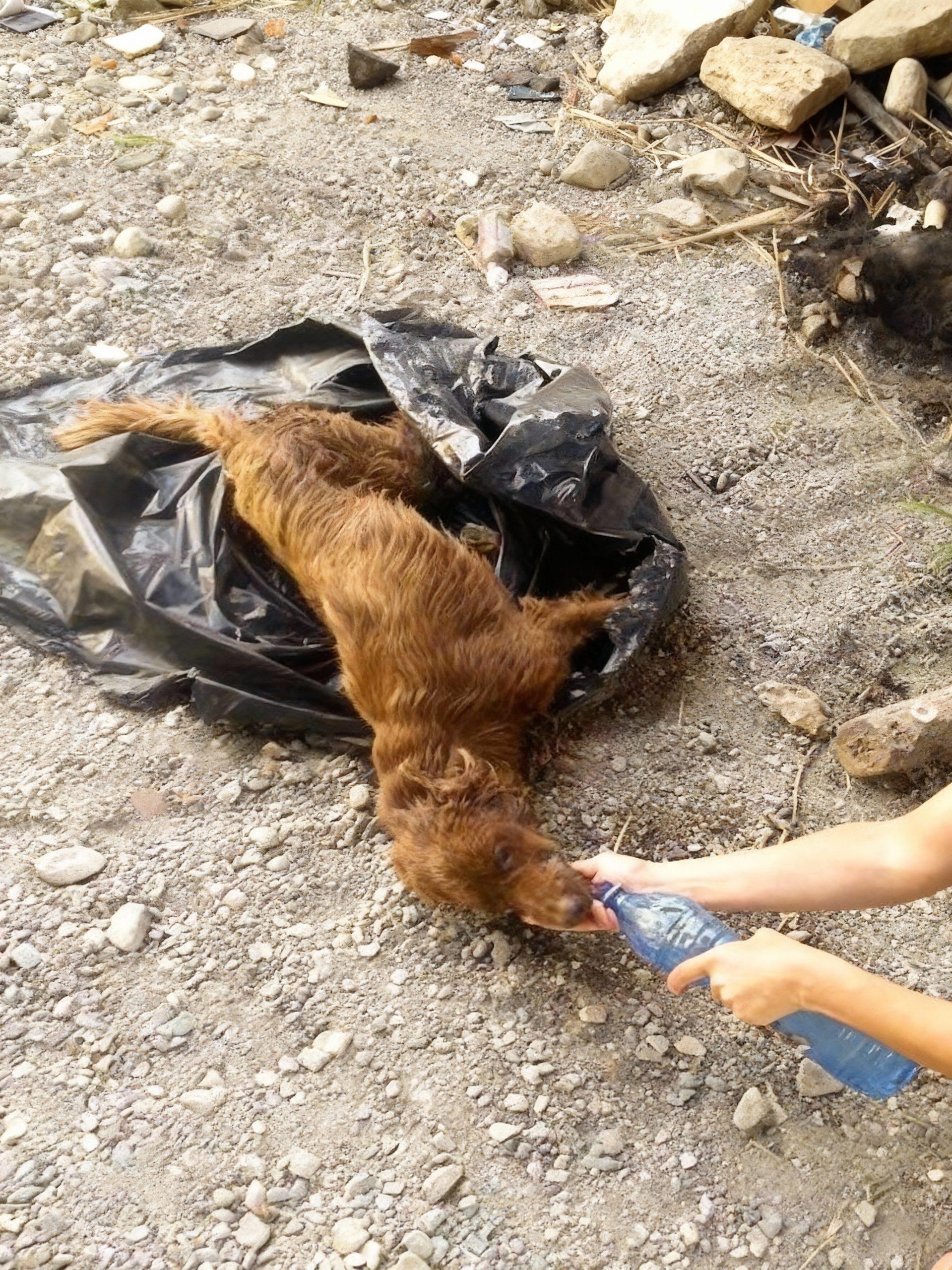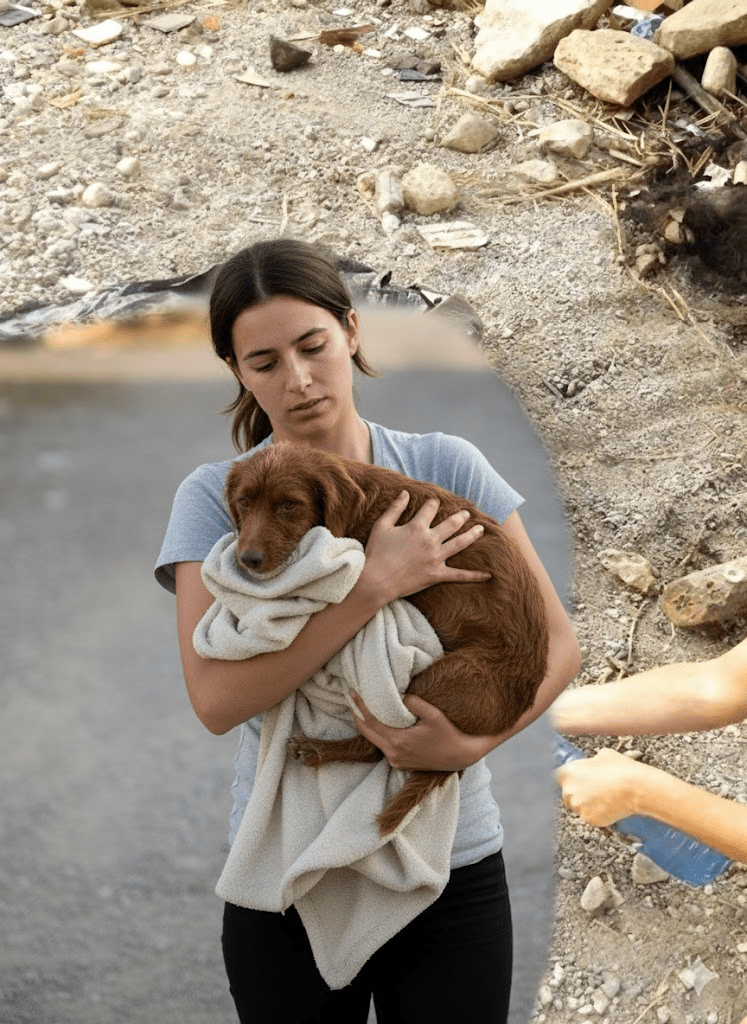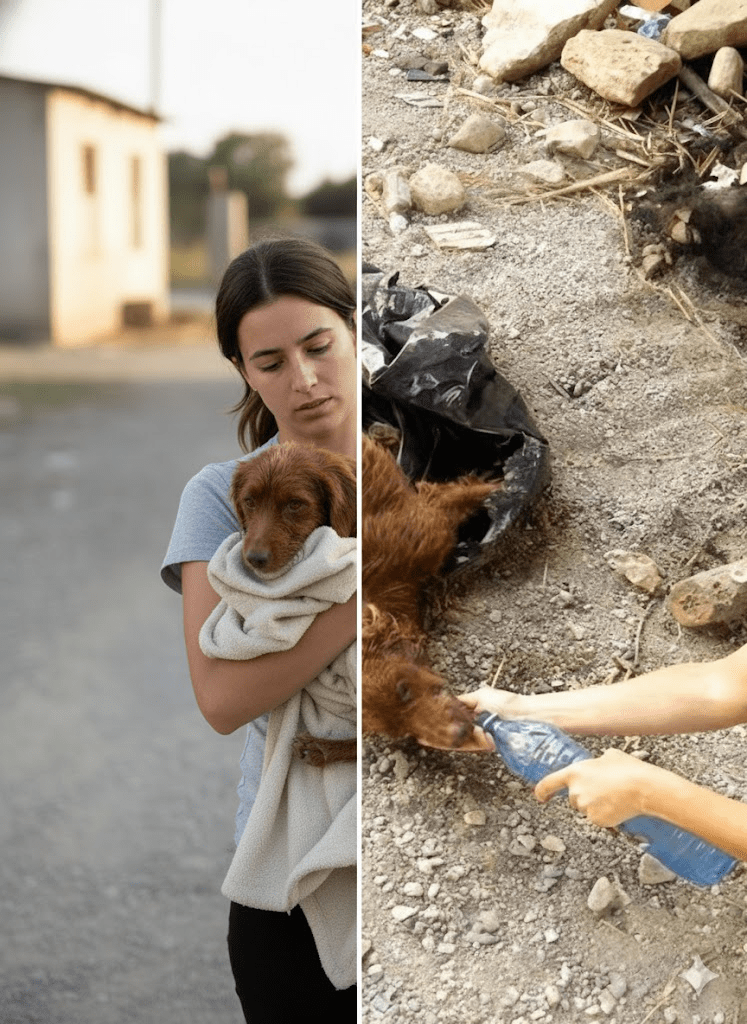The image before us tells a powerful story, one that begins in hardship but hints at the profound capacity for compassion and resilience. It shows a small, emaciated dog, its fur matted and dull, seemingly abandoned in a desolate, gravelly area, partially resting on a black plastic bag. Its posture speaks of weakness and neglect, a life lived on the fringes. Yet, there’s a ray of hope: a human hand gently offers water from a plastic bottle, a gesture of kindness that cuts through the stark reality of the surroundings. This single act of empathy transforms the narrative from one of despair to one of potential rescue and recovery. The dog’s tentative reach towards the water, despite its weakened state, underscores an innate will to survive, a testament to the enduring spirit found even in the most vulnerable creatures. This photograph serves as a poignant reminder of the countless animals facing similar plights globally, often unseen and unheard, and the critical role human intervention plays in changing their fate. It challenges us to look beyond the immediate scene and consider the broader implications of animal welfare, encouraging us to recognize that every creature deserves a chance at a life free from suffering.

The immediate intervention seen in the initial image—offering water—is often the first critical step in rescuing a neglected animal. For a creature experiencing severe dehydration and malnourishment, clean water can be a life-saving commodity, a small act that can prevent organ failure and provide a much-needed energy boost. However, the path to full recovery extends far beyond this initial offering. Rescuing an animal in such a state requires a comprehensive approach, encompassing not just hydration and nutrition, but also veterinary care, warmth, and ultimately, a safe and loving environment. It’s a testament to the dedication of animal welfare advocates and ordinary individuals alike who are willing to step in and make a tangible difference in the lives of these vulnerable beings, often at significant personal effort and expense. This initial act of kindness often blossoms into a commitment to see the animal through its entire rehabilitation journey.

Such situations highlight the pervasive issue of animal abandonment and neglect, a problem exacerbated by various socio-economic factors. Animals are often discarded due to financial strain, lack of understanding about responsible pet ownership, or simply a callous disregard for their well-being. The consequences for these animals are dire, leaving them exposed to hunger, thirst, disease, and the elements, facing a constant struggle for survival against insurmountable odds. The sight of a neglected animal should serve as a powerful call to action, urging communities and individuals to address the root causes of abandonment, promote responsible pet ownership, and support organizations dedicated to rescuing and rehabilitating these creatures. Education and awareness campaigns play a vital role in shifting societal attitudes towards animal welfare.

Upon rescue, the immediate priority shifts to veterinary assessment and care. A neglected animal will likely suffer from a range of health issues, from parasites and infections to more severe conditions stemming from malnutrition. A veterinarian’s expertise is crucial in diagnosing these problems and devising a treatment plan. This often involves a carefully monitored refeeding program, as sudden introduction of too much food can be dangerous for a starved animal. Additionally, vaccinations, deworming, and treatment for any visible injuries or skin conditions are essential components of their initial care. This period of intensive medical attention is critical for stabilizing the animal’s physical health and laying the groundwork for its long-term recovery. It’s a delicate balance of providing necessary interventions without overwhelming an already weakened system, requiring both medical knowledge and compassionate handling.

Recovery from neglect isn’t just about physical healing; it’s also about psychological rehabilitation. Animals that have experienced trauma, abandonment, or abuse often exhibit behavioral issues, ranging from fear and aggression to extreme shyness and withdrawal. Building trust with such an animal requires immense patience, understanding, and consistent positive reinforcement. This process can involve specialized training, gentle socialization, and creating a predictable, safe environment where the animal feels secure enough to begin to let its guard down. The goal is to help them overcome their past traumas and learn to trust humans again, preparing them for a future in a loving home where they can thrive emotionally as well as physically. It’s a journey of slow, deliberate steps, each one reinforcing the idea that they are now safe and valued.

The ultimate goal for any rescued animal is to find a permanent, loving home. This adoption process is meticulously designed to ensure the best possible match between the animal and its new family. It typically involves applications, interviews, and sometimes home visits to assess the suitability of potential adopters. For an animal that has endured hardship, finding a patient and understanding family is paramount, one that is prepared to continue the work of building trust and providing a stable, enriching environment. The joy of witnessing a once-neglected animal finally settled into a happy home, showered with affection and care, is the ultimate reward for all involved in the rescue and rehabilitation process. It closes the loop on their journey, transforming a story of neglect into a powerful narrative of hope and second chances, illustrating the profound impact that compassion can have.







